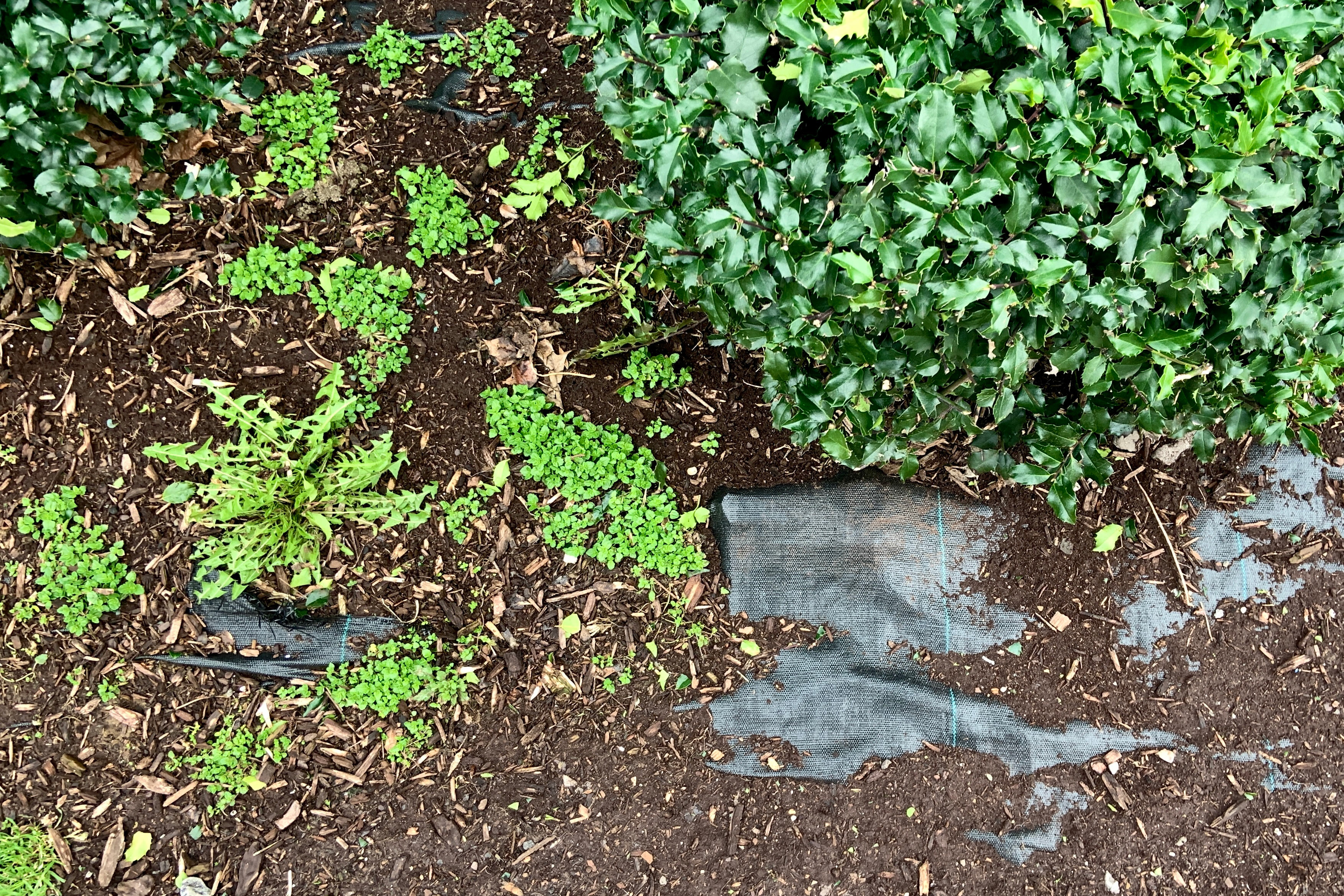Tired of Pulling Weeds? Prevent Them
Hate pulling weeds? This season, instead of having to waste time pulling weeds, prevent them! Try Preen Weed Preventers and free yourself from weeding.
Defeating weeds is one battle gardeners can win… but it requires persistence and sidestepping a few key mistakes. Weeds compete with the plants in your garden for water, nutrients and light. Some weeds are aggressive or even invasive and can overtake a garden if allowed to spread unchecked.
Good weed management practices can reduce weeds and lessen their impact on you and your garden. Here’s a look at eight common weeding mistakes that gardeners make:
1. Allowing bare ground. Weeds are nature’s way of preventing soil erosion. If you don’t cover all bare ground in your gardens, nature will step in to head off the loss of soil with its own plant choices.
The solution: fill all ground with plants that you want, whether it’s grass in a lawn, wall-to-wall shrubs and perennials in a border bed, or groundcovers under a tree. If you don’t or can’t fully plant, a second option is covering bare ground with mulch.

Common groundsel (Senecio vulgaris) is a winter annual weed that produces from 1,700 to 25,000 seeds per plant. supitchamcsdam / iStock / Getty Images Plus
2. Letting weeds go to seed. Weeds are such prolific seeders that even a few flowers gone to seed can mean thousands of weed seeds blowing around to set the stage for future trouble.
Never let a weed go to seed. Go on regular weed patrols to remove or kill weeds as soon as possible. At least slice off weed flower heads before any seeds mature.
Complement that by using mulch and/or Preen Extended Control Weed Preventer in garden beds to keep weeds from getting started in the first place.

Every time you dig, plant, or even pull a weed, you disturb the soil and potentially stir up weed seeds that are buried and dormant in the soil. Mikhail Rudenko / iStock / Getty Images Plus
3. Disturbing the soil. Every time you dig, plant, or even pull a weed, you disturb the soil and potentially stir up weed seeds that are buried and dormant in the soil. Once closer to sunlight, these weeds can quickly sprout.
Whenever working in the garden, try to disturb the soil as little as possible, and limit or avoid tilling.
Mulching and/or weed preventers are anti-sprouting aids that can be used whenever you can’t avoid soil disturbance.
4. Giving up. Weeds can seem like an insurmountable problem, especially if you’re tackling areas that haven’t been maintained for a long time. Equally frustrating is when weeds mount a comeback after you’ve cleared an area.
However, if you’re persistent enough, you will win. Weeds can’t keep sending up new shoots forever if you keep pulling or cutting them, and weed seeds in the soil eventually will dwindle as you keep eliminating each one that sprouts. Granular weed preventers such as Preen can go on top of planted beds to further stop new weeds before they have a chance to sprout and grow. Two to three applications per year can give season-long protection, depending on your climate and which type of Preen you use.
Put up your defenses of regular patrolling, mulch, dense planting, and weed-preventing, and you’ll ultimately come out on top.
5. Using the wrong spray. Herbicides are a labor-saving way to control weeds, but you have to use the right one for the intended job.
Keep in mind that there are two main types of herbicides – “non-selective” ones that kill most any green plant and “selective” ones that target certain kinds of plants, such as broadleaf weed-killers that kill weeds in the lawn without harming the grass.
Many a rookie lawn-owner has mistakenly used a non-selective herbicide on the lawn, only to find that the spray killed the grass as well as the weeds. Read the label to make sure the product kills only what you want to kill and that it’s effective against the weeds you have.

Read labels for details on how to apply herbicides. Be careful not to allow product to drift onto nearby plants. karenfoleyphotography / iStock / Getty Images Plus
6. Misusing sprays. Herbicides also can do unintended or off-target damage if you don’t use them the right way.
A common mistake is when home-owners double or triple the strength, using the logic that if the recommended dose works, double the dose will work twice as well or twice as fast. Overmixing not only can make a product more hazardous to you or the environment, it may damage plants that you don’t want to harm.
Again, read those labels for details on how and when to apply. Some may harm plants if used on hot, sunny days, while others are less effective when temperatures are too cold. Also be careful not to allow spray mist to drift onto nearby plants. Either direct the spray carefully on non-windy days or place barriers between weeds and your “keeper” plants.
7. Using weed preventers to kill weeds. Granular weed preventers such as Preen’s products are formulated to stop the sprouting of new weeds, not kill existing weeds. When used as directed, Preen Extended Control Weed Preventer creates an invisible barrier that prevents listed weeds from germinating for up to six months per application.
If you have weeds already, they’ll have to be removed or killed first. Then a granular weed preventer can be used over mulch around most kinds of plants to limit new weeds. Be sure to consult the product label for lists of weeds prevented and compatible plants, as well as application tips.

Weeds growing in decomposing mulch atop weed-blocking landscape fabric. bgwalker / iStock / Getty Images Plus
8. Over-relying on weed fabrics.
Gardeners sometimes think their weed problems are over for good if they lay weed fabric over the ground. While fabrics can smother weed seeds, they have a few limitations.
One is that if you cover the weed barrier fabric with mulch, weeds can germinate on top of the fabric as the mulch breaks down. Some weed roots may penetrate the fabric over time, making them difficult to remove.
Another is that if you top the fabric with stone, leaves and other organic debris eventually blow in, decay, and create enough growing medium to support weeds. Eventually, the fabric itself can break down or tear and weeds can set roots through the fabric, making it difficult to pull them out.
Since fabrics can inhibit oxygen and water from reaching perennial, tree and shrub plant roots, they may be more useful in settings such as in paths and annual flower or vegetable gardens outfitted with drip irrigation. Where fabric weed barriers are used, maintain landscape beds by removing leaves and debris that collect on top of mulch or stone covering the weed barrier and replace decomposing organic mulch and broken or rusting metal pins to keep the fabric in place.
Apply Preen Extended Control Weed Preventer on top of organic or stone mulch to stop any weed seeds from sprouting. Preen Extended Control Weed Preventer controls more than 125 label-listed weeds for up to 6 months per application and can be used around over 600 plants. (Check the label to be sure the weed prevention product is recommended for use with existing plants.)
Eventually, fabric weed barriers will wear out and you'll need to remove and replace them.